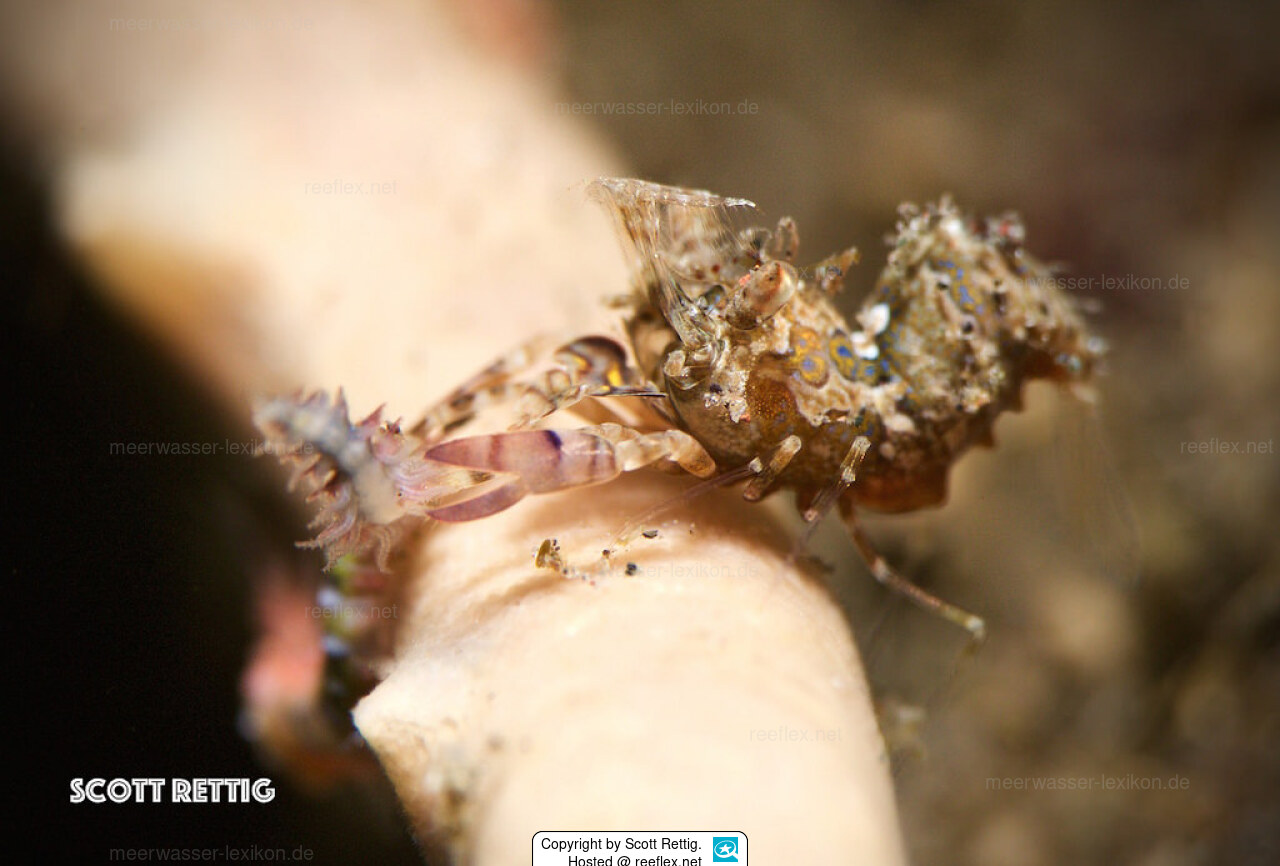Info
Phyllognathia simplex Fujino, 1973
Phyllognathia simplex shrimp.Very rare, tiny (less than a centimeter long) and well camouflaged shrimp.They are usually seen at night time when they come out to feed, during they time, they are hiding, buried in the sand. Feed on brittle stars.
Phyllognathia simplex shrimp.Very rare, tiny (less than a centimeter long) and well camouflaged shrimp.They are usually seen at night time when they come out to feed, during they time, they are hiding, buried in the sand. Feed on brittle stars.







 Scott Rettig, Indonesien
Scott Rettig, Indonesien








